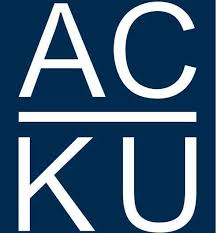یاداشت های یک مسافر / فضل احمد افغان.
Material type: TextLanguage: Dargwa Publication details: [تاجکستان] : [ناشر مشخص نیست]، 1936..Description: 78 صفحه ؛ 30 سانتی مترSubject(s): LOC classification:
TextLanguage: Dargwa Publication details: [تاجکستان] : [ناشر مشخص نیست]، 1936..Description: 78 صفحه ؛ 30 سانتی مترSubject(s): LOC classification: - رسالهDK265 الف
| Item type | Current library | Call number | Status | Date due | Barcode | Item holds | |
|---|---|---|---|---|---|---|---|
 Monograph
Monograph
|
Afghanistan Centre at Kabul University | رسالهDK265الف 76 1936 (Browse shelf(Opens below)) | Available | 3acku000463025 |
The Library of Congress donated copies of the digitized material (along with extensive bibliographic records) containing more than 163,000 pages of documents to ACKU, the collections that include thousands of historical, cultural, and scholarly materials dating from the early 1300s to the 1990s includes books, manuscripts, maps, photographs, newspapers and periodicals related to Afghanistan in Pushto, Dari, as well as in English, French, German, Russian and other European languages ACKU has a PDF copy of the item.
کليه حقوق دجیتالی اين کتاب برای پدیدآور و مرکز منبع معلومات افغانستان در پوهنتون کابل محفوظ است هر ﮔﻮﻧﻪ نشر و اضافه کردن آن در سایت های دیگر بیدون اجازه ممنوع است.
Only the PDF copy is available in ACKU library.
“Yāddāsht-i yak musāfir (Memoirs of a traveler) is an account of the political and social history of the Tajikistan in the early 20th century, written from a pro-Soviet and pro-Russian perspective. The author, Fazl Ahmad Afghan, writes of leaving Afghanistan for neighboring Tajikistan near the turn of the century and records his observations about the remarkable progress made by the Tajik people in subsequent decades. He begins his history with the Emirate of Bukhara (in present-day Uzbekistan) on the eve of its annexation by imperial Russia in the 1860s and 1870s. The author emphasizes the backward character of this polity (placing special emphasis on the licentiousness of the clergy) and the hopeless plight of those living within its borders. Annexation by Russia brings some improvement in the form of the telegraph and postal service and other symbols of progress, but these changes only benefit the ruling class, leaving the working class to languish as before. The main portion of the book offers a glowing (and one-sided) account of the progress achieved in the aftermath of the Russian Revolution and the formation of the Tajik Soviet Socialist Republic. Areas of progress in the author’s view include improved health care and education, equality for women, and an equitable system of control over the agricultural and industrial production by the working class. A notable feature of the early history of the Tajik Republic is that it was initially formed as an entity within the Uzbek Soviet Socialist Republic. Writing in the mid-1930s, the author treats the secession of the Tajik Republic from the Uzbek Republic, which occurred in 1929, as not yet fully actualized. Several of the illustrations in the book depict public buildings said to serve the working class in the post-revolutionary period. The section on the period of imperial Russian rule includes an illustration of revolutionary Tajiks condemned to die for their seditious activities, while the section on the rule of the Emirate of Bukhara includes an illustration of an anonymous and fictitious victim of torture. The final chapter concerns the history of contemporary Afghanistan, but virtually all of the text for this section is missing. The final surviving portion of the book is a condemnation of British capitalism and its exploitation of Egypt, Iran, and Afghanistan, and a presentation of the argument that were these nations to be freed of foreign influence, they could share in the progress made by the Tajik Soviet Socialist Republic”—library of congress.
Dari
